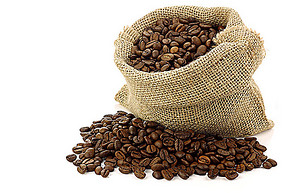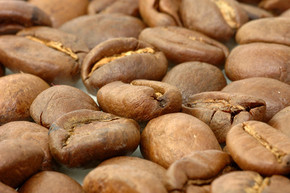Yunnan coffee beans cultivation areas and processing methods Introduction Arabica coffee washing and sun flavor difference
Follow the caf é (Wechat official account vdailycom) and found that Beautiful Cafe opened a small shop of its own.
The geographical producing area of Yunnan coffee bean is the embodiment of its flavor.
About Asia / Pacific region
Mellow, sweet, smooth, with herbal and earthy aromas.
Coffee producing areas in the Asia / Pacific region include the Indonesian Islands, East Timor, South Asia and Papua New Guinea. This vast area spans a variety of climates and terrain, and some of the most distinctive coffees in the world can be found here. With the exception of washed coffee from Papua New Guinea and East Timor, most of the coffee we buy from the region is processed in a "semi-washed" way and is famous for its mellow and spicy flavor. Semi-washed coffee has mild acidity and herbal characteristics. Although some of the world's top 10 coffee producing countries are located in the Asia / Pacific region, Starbucks does not buy coffee from all of these regions for a variety of reasons. (Vietnam is the second largest coffee producer in the world, but its main harvest is made up of Robbins coffee beans, which we do not buy.)
* robusta is a highly adaptable tree, not the flavor in the cup.

The processing methods of Yunnan coffee beans will affect the overall flavor of coffee.
Yunnan coffee bean washing method
Water washing helps to improve the acidity or aroma of coffee and gives it a soft and refreshing aftertaste.
As the name implies, this method mainly depends on the use of water. This is especially true when the mucus layer is dissolved in a large water tank during fermentation. As a result, cleaner coffee beans and cup flavors with higher acidity can be obtained. In fact, fermentation strengthens the acidity of coffee, which is why Latin American coffee (mostly washed) is often famous for its remarkable acidity.
① collection: coffee berries will be transferred to a wet workshop where they are measured and placed in the collection tank.
② flesh: after the berries are washed, they are fed into a pulp remover. By rubbing, the pulp on the coffee beans can be basically removed. The coffee beans are waiting to ferment, and the flesh will be collected and used for composting.
③ fermentation: after the pulp is removed, the coffee beans will be sent to the fermentor and fermented for 18-36 hours. In the early stages of fermentation, the enzyme breaks down the mucus so that the pulp can be removed. After fermentation, the coffee beans remove all residual mucus through the cleaning channel.
④ drying: coffee beans are dried on a drying table in a large outdoor yard, or by using a mechanical drum dryer. When drying outdoors, coffee beans need to be raked and turned constantly to ensure that they are evenly dried in the sun, a process that takes 5-7 days.
⑤ shelving: dry coffee beans are bagged and transferred to the warehouse for two months, while coffee beans continue to form flavor.
⑥ peeling: peel the coffee after shelving, the last step is to remove the peel around the outside of the coffee bean.
Important Notice :
前街咖啡 FrontStreet Coffee has moved to new addredd:
FrontStreet Coffee Address: 315,Donghua East Road,GuangZhou
Tel:020 38364473
- Prev

The type of coffee in Yunnan, the main producing area of Yunnan small-grain coffee.
Follow the caf é (Wechat official account vdailycom) found that the beautiful cafe opened its own shop and planted Arabica coffee beans in Yunnan. The varieties were first introduced in 1892 in Zhukula area, Pingchuan Town, Binchuan County, Dali Prefecture, Yunnan Province. Arabica Bourbon and Arabica Tippica coffee beans were introduced, and then Kenya Katimo (Arabica and Luo) was introduced in 1991.
- Next

Introduction of Starbucks Yunnan coffee beans, the quality of Starbucks Yunnan coffee
Following Kaiping (official account vdailycom of Wechat) found that Starbucks opened a small shop of its own, Starbucks' first coffee bean from a single producing area in China, Starbucks Yunnan coffee beans, which went on sale simultaneously in all Starbucks stores in China on January 3, 2017. This coffee uses 100% of the high-quality Arabica beans grown in Yunnan and pours Starbucks' preference for preferred coffee.
Related
- Detailed explanation of Jadeite planting Land in Panamanian Jadeite Manor introduction to the grading system of Jadeite competitive bidding, Red bid, Green bid and Rose Summer
- Story of Coffee planting in Brenka region of Costa Rica Stonehenge Manor anaerobic heavy honey treatment of flavor mouth
- What's on the barrel of Blue Mountain Coffee beans?
- Can American coffee also pull flowers? How to use hot American style to pull out a good-looking pattern?
- Can you make a cold extract with coffee beans? What is the right proportion for cold-extracted coffee formula?
- Indonesian PWN Gold Mandrine Coffee Origin Features Flavor How to Chong? Mandolin coffee is American.
- A brief introduction to the flavor characteristics of Brazilian yellow bourbon coffee beans
- What is the effect of different water quality on the flavor of cold-extracted coffee? What kind of water is best for brewing coffee?
- Why do you think of Rose Summer whenever you mention Panamanian coffee?
- Introduction to the characteristics of authentic blue mountain coffee bean producing areas? What is the CIB Coffee Authority in Jamaica?

